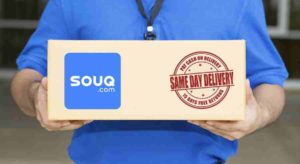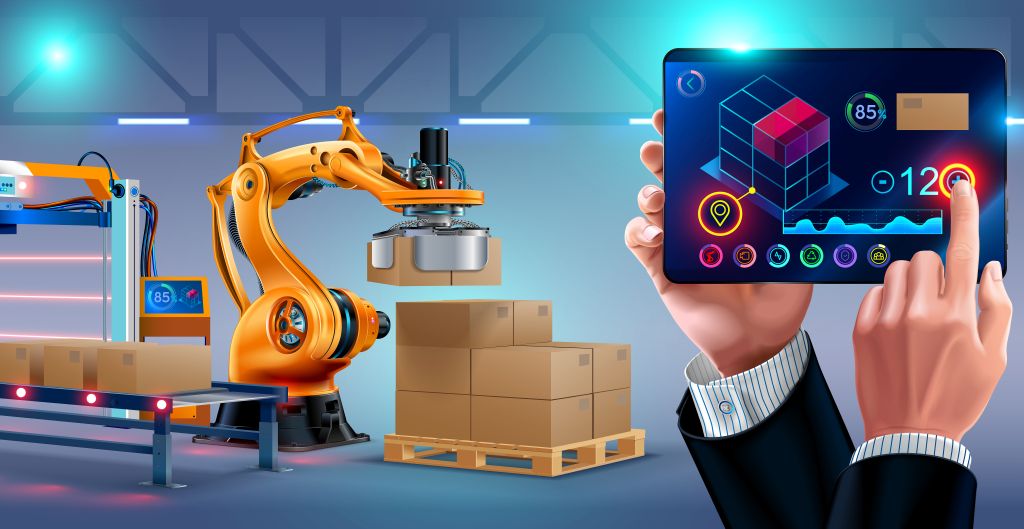The warehousing and distribution logistics industry in the GCC region is growing steadily and becoming a significant contributor to the region’s economy, despite economic challenges. This growth is fueled by several factors such as increasing investment from government and the private sector in warehouse and transportation infrastructure, the rise of e-commerce, pro-business regulatory policies, growing warehouse opportunities, lower operating costs, increased outsourcing, economic diversification, increasing trade, and increasing import & export volumes.
The global logistics market was worth US$ 10.32bn in 2017 and it is estimated to grow to US$ 12.68bn by 2023, with a CAGR (compounded annual growth rate) of 3.49% between 2017 and 2023. Statista estimates that the logistics market in the GCC region will grow to the value of US$ 100bn by 2020. Another report says that the GCC logistics market is set to grow at a rate of 7.3% CAGR to a value of US$ 66.3bn by 2020.
Kuwaiti logistics firm Agility reports that the UAE is the third best logistics centre among 50 emerging markets, behind China and India. Bahrain was ranked fifth, with Oman in sixth and Saudi Arabia in seventh position. In 2015, logistics accounted for 13% of Saudi Arabia’s GDP, and 10% of the UAE’s. These figures would have now risen as both countries have been investing heavily in this industry and have optimistic projections.
With Expo 2020 around the corner, the region will see increased trade that will give a fillip to the warehousing and logistics industry.
Technology is a major contributor to this growth and is disrupting the logistics industry in the region. Let’s look at some prominent examples.
Souq.com doubles sales
Souq.com – now acquired by Amazon – was the largest e-commerce platform in the Middle East with a market valuation of over US$ 1bn. It continued to invest in technology that gave its e-commerce platform a cutting-edge over the competition.
 And the investment paid rich dividends. Sales figures from its popular White Friday sales doubled every year. For its first White Friday sales in 2014, Souq.com had over five million visitors and approximately 120,000 orders. It sold over 246,000 items. These numbers have more than doubled during the second White Friday sales in 2015: 13 million visitors and 600,000 items sold. And sales still continued to double each year ever since.
And the investment paid rich dividends. Sales figures from its popular White Friday sales doubled every year. For its first White Friday sales in 2014, Souq.com had over five million visitors and approximately 120,000 orders. It sold over 246,000 items. These numbers have more than doubled during the second White Friday sales in 2015: 13 million visitors and 600,000 items sold. And sales still continued to double each year ever since.
The doubling of its sales goes beyond the website and the quality of the products being sold; it is a direct result of certain strategic business decisions and technology investments. One decision was to bring the last mile fulfilment operations back in-house. These were previously outsourced to 3PL companies.
Souq.com also conducted its own logistics operations and offered same-day deliveries. To do this, it had to tightly integrate its technology and operations. It built its own warehousing operating systems and deployed analytics solutions to track and analyse the vast terabytes of data accumulated from past transactions and other data points. With more profound insights into their data, they acquired a better understanding of customer behavior and preferences during past sales – which helped them to prepare in advance for upcoming sales.
Souq.com also built its own technology, which did not exist with other e-commerce players. It had custom-built Android devices (manufactured in China) and its own native applications that helped pickers in its warehouses and fulfillment centres. Armed with this technology, pickers are able to see in advance, exactly where they need to go to fetch a particular product.
This saved a lot of time and contributed heavily to Souq.com’s just-in-time model – that made its inventory handling super efficient. It helped maximize its storage capacity, thus making full utilisation of space, optimizing the pickups, and saving on costs. By bringing operations in-house it gained complete control over its inventory.
For Aramex: Technology is the business disrupter
UAE-based logistics provider Aramex has now become a global brand. It is known for its customized services and product innovation. Aramex is listed in the Dubai Financial Market (DFM). It offers a wide range of innovative transportation and loAramex considers itself a technology-driven enterprise. It owes its global success to technology innovation, which it says, “is critical to maintaining its asset-light business model” and “for leveraging the Aramex global network.” Rather than invest heavily in assets, Aramex invests in technology and sells transportation and logistics solutions. It also acquires or partners with local logistics companies that have strong networks. It is leveraging technology to make last-mile delivery more efficient logistics technologies to support business needs. Its solutions range from warehousing to facility management and value-added services like express delivery.
 Aramex considers itself a technology-driven enterprise. It owes its global success to technology innovation, which it says, “is critical to maintaining its asset-light business model” and “for leveraging the Aramex global network.” Rather than invest heavily in assets, Aramex invests in technology and sells transportation and logistics solutions. It also acquires or partners with local logistics companies that have strong networks. It is leveraging technology to make last-mile delivery more efficient.
Aramex considers itself a technology-driven enterprise. It owes its global success to technology innovation, which it says, “is critical to maintaining its asset-light business model” and “for leveraging the Aramex global network.” Rather than invest heavily in assets, Aramex invests in technology and sells transportation and logistics solutions. It also acquires or partners with local logistics companies that have strong networks. It is leveraging technology to make last-mile delivery more efficient.
In the Company’s Annual Report for 2017, Aramex CEO Bashar Obeid writes, “In the 24 years I have been with Aramex, I have never seen technology be as disruptive to business operating models as it has been in the last few years; change is happening at an unprecedented pace, and yet we continue to grow as a company.”
Aramex ended 2017 with near double-digit growth in revenue to AED 4,721 million and substantial expansion in its bottom line to reach AED 435.4 million.
It acknowledged that e-commerce continues to be the driver of growth in its Express business for the last few years. In 2017, its International Express business grew by an impressive 19% to reach the AED 2,007 million on the back of the strong growth in cross-border e-commerce. Its Domestic Express business witnessed a 4% expansion from 2016 to AED 1,022 million, thanks in large part to its operations in Africa and Asia-Pacific – which are both promising core markets.
Throughout 2017, Aramex continued to enhance its technology and navigation tools used by its couriers, shifting from handheld scanners to smartphones powered by new software compatible with Android and iOS.
Aramex improved the address capturing the experience for its customers, using both desktop and mobile mapping tools integrated with global map providers such as Here and what3words. Using these interfaces, in addition to the My Address platform launched in 2015, Aramex customers can pinpoint their exact location and select a delivery/pickup time when they place their service request.
Aramex has also launched its AI-enabled Chatbot on Facebook Messenger. Named ‘Aramex Bot’, this feature enables personalised, scalable conversations with customers about shipment-related queries and different service offerings. It provides users with a convenient way to easily find the nearest Aramex location, track shipments and share a preferred delivery location. It also enables customers in the UAE to schedule a delivery for personalized shipments and e-Commerce parcels. The Chatbot service will soon be available to all Aramex customers across the Middle East.
DHL: Tech innovation presents opportunities
Logistics major DHL believes tech innovation presents a tremendous opportunity for GCC logistics. It is exploring the use of various technologies such as drones, robots, AI, virtual reality, and blockchain, to add increased intelligence and automation to supply chains in the GCC region and globally.
Last year, DHL completed successfully completed trials of the Parcelopter, an autonomous transport drone that drops packages to peoples doorsteps. DHL believes its autonomous Parcelopter will open new frontiers in cross-country deliveries, the will usher in an era of speedy, safe, and secure parcel deliveries.
And DHL is also testing collaborative robots for use in its warehouses. It’s two smart and collaborative robots, named ‘Baxter’ and ‘Sawyer’, will handle co-packing and other value-added tasks, such as assembly, kitting, packaging and pre-retail services.
The logistics industry will eventually use collaborative robots to improve efficiency in the supply chain.
Blockchain technology can dramatically improve the efficiency and reliability of supply chains in the logistics industry. Here is a use case.
Last year, DHL announced a partnership with Accenture to create a blockchain supply prototype in 2019. DHL and Accenture created a blockchain-based serialization prototype with nodes in six geographies to track pharmaceuticals across the supply chain. The ledger tracking these medicines may be shared with stakeholders, including manufacturers, warehouses, distributors, pharmacies, hospitals, and doctors. Lab-simulations show how blockchain could handle more than seven billion unique serial numbers and 1,500 transactions per second.
This use case could also be applied to, and has similar applications in other industries.
The Road Ahead
While growth in the logistics industry, particularly in the GCC region, looks optimistic, the industry needs to address specific challenges that could hinder this growth. New regulatory norms, rising pollution levels, high inventory costs, scarcity of warehouse space, rising volumes from the e-commerce sector, and rising trade tariffs and trade agreements between countries could slow down this growth.
Same-day deliveries and increasing volumes driven by online sales present new challenges. Supply chain risk management continues to be a challenge. Reducing theft and damage of goods also needs to be addressed.
To ensure secure, safe, and speedy deliveries the industry will need to find new ways to counter these challenges and risks. It must learn how to harness technology (like AI and blockchain) to eliminate the middleman, streamline processes, increase automation, and tighten security.
This story was written exclusively for Logisticsgulf.com and first appeared here. Digital Creed also creates exclusive content for other websites and blogs. For enquiries write to [email protected]










